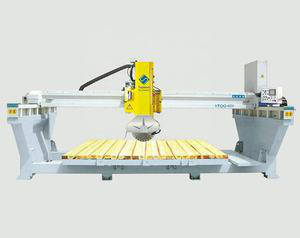The Releated Products of Cutting Quartz
Cutting Quartz
Cutting Quartz: Precision, Techniques, and Tools
Cutting Quartz: Selecting the Right Tools for Precision
When it comes to cutting quartz, precision is paramount. Whether you’re a professional fabricator or a DIY enthusiast, having the right tools can make all the difference. Quartz, known for its hardness and durability, requires specialized equipment to ensure clean, accurate cuts. The first step in this process involves selecting diamond blades specifically designed for cutting quartz. These blades contain industrial diamonds embedded in a metal matrix, which allows them to efficiently slice through the tough surface of quartz without chipping or cracking.
Techniques for Cutting Quartz Efficiently

Efficiency in cutting quartz not only saves time but also reduces material waste. One effective technique involves pre-scoring the surface of the quartz slab. This method helps guide the blade along the desired cut line, ensuring straightness and minimizing errors. Additionally, using a water jet cutter can offer unparalleled accuracy and versatility, especially for intricate designs. Water jets use a high-pressure stream of water mixed with an abrasive substance like garnet to cut through materials, making them ideal for detailed work on quartz surfaces.


Safety Precautions When Cutting Quartz
Safety should always be a top priority when working with any type of machinery, particularly when cutting quartz. Dust generated during the cutting process can pose health risks if inhaled, so wearing appropriate respiratory protection is crucial. Additionally, goggles or safety glasses should be worn to protect your eyes from flying debris. It’s also important to ensure that all equipment is properly grounded and that electrical cords are kept away from wet areas to prevent accidents.

Maintenance of Tools Used for Cutting Quartz
Proper maintenance of your cutting tools is essential to maintain their effectiveness and longevity when working with quartz. After each use, clean diamond blades thoroughly to remove any residue that might have accumulated. Storing these tools in a dry place prevents rust and corrosion, extending their life span. Regularly inspecting blades for wear and tear ensures that they remain sharp and capable of producing precise cuts, thus maintaining the quality of your work.

Tips for Achieving Smooth Edges When Cutting Quartz
Achieving smooth edges after cutting quartz often requires additional steps beyond the initial slicing. Using a polishing pad or a diamond grinding wheel can help refine the edges, removing any rough spots left by the cutting process. For a mirror-like finish, applying a polishing compound specifically formulated for quartz can yield impressive results. This step not only enhances the aesthetic appeal of the finished product but also provides a safer edge by rounding off any sharp points.
Choosing the Best Method for Cutting Quartz
The method chosen for cutting quartz largely depends on the project requirements and available resources. For large-scale commercial projects, automated bridge saws equipped with diamond blades provide both speed and accuracy. However, for smaller jobs or custom work, handheld saws or water jet cutters may be more practical. Understanding the strengths and limitations of each method will guide you in selecting the most appropriate approach for your specific needs, ensuring successful outcomes every time.
Request for Quotation
报错: 未找到这个表单





